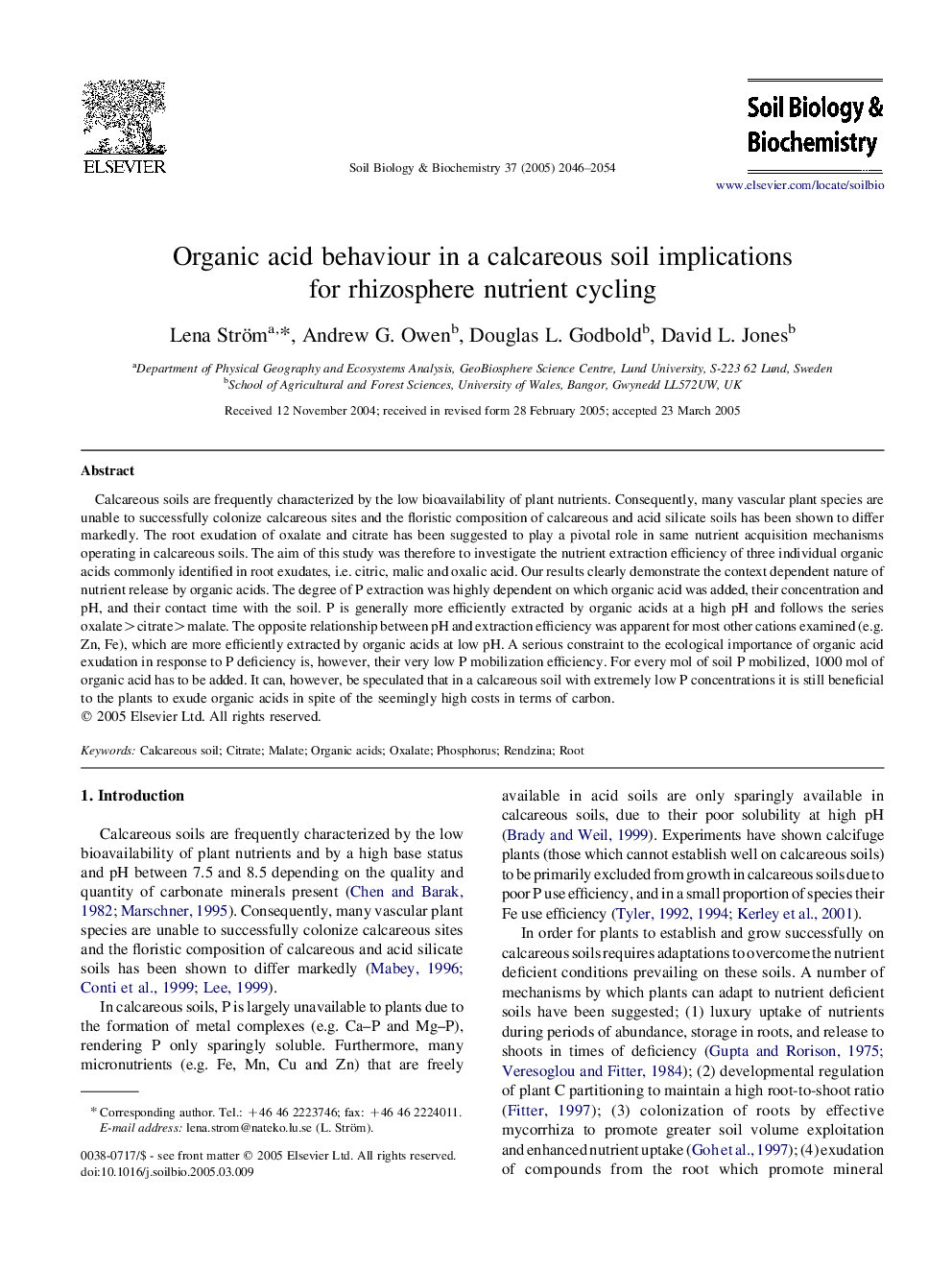| Article ID | Journal | Published Year | Pages | File Type |
|---|---|---|---|---|
| 2027249 | Soil Biology and Biochemistry | 2005 | 9 Pages |
Calcareous soils are frequently characterized by the low bioavailability of plant nutrients. Consequently, many vascular plant species are unable to successfully colonize calcareous sites and the floristic composition of calcareous and acid silicate soils has been shown to differ markedly. The root exudation of oxalate and citrate has been suggested to play a pivotal role in same nutrient acquisition mechanisms operating in calcareous soils. The aim of this study was therefore to investigate the nutrient extraction efficiency of three individual organic acids commonly identified in root exudates, i.e. citric, malic and oxalic acid. Our results clearly demonstrate the context dependent nature of nutrient release by organic acids. The degree of P extraction was highly dependent on which organic acid was added, their concentration and pH, and their contact time with the soil. P is generally more efficiently extracted by organic acids at a high pH and follows the series oxalate>citrate>malate. The opposite relationship between pH and extraction efficiency was apparent for most other cations examined (e.g. Zn, Fe), which are more efficiently extracted by organic acids at low pH. A serious constraint to the ecological importance of organic acid exudation in response to P deficiency is, however, their very low P mobilization efficiency. For every mol of soil P mobilized, 1000 mol of organic acid has to be added. It can, however, be speculated that in a calcareous soil with extremely low P concentrations it is still beneficial to the plants to exude organic acids in spite of the seemingly high costs in terms of carbon.
